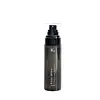What's inside
What's inside
 Key Ingredients
Key Ingredients

 Benefits
Benefits

 Concerns
Concerns

No concerns
 Ingredients Side-by-side
Ingredients Side-by-side

Prunus Persica Fruit Water 77%
Masking2,3-Butanediol
HumectantWater
Skin ConditioningGlycerin
HumectantDipropylene Glycol
HumectantNiacinamide
SmoothingButylene Glycol
Humectant1,2-Hexanediol
Skin ConditioningLactobacillus Ferment
Skin ConditioningMethylpropanediol
SolventStreptococcus Thermophilus Ferment
HumectantPrunus Persica Fruit Extract
AbrasivePyrus Malus Juice
Skin ConditioningBifida Ferment Lysate
Skin ConditioningBacillus Ferment
Skin ConditioningPhellinus Linteus Extract
Skin ConditioningXylose
HumectantGalactomyces Ferment Filtrate
HumectantAlpha-Arbutin
AntioxidantPrunus Persica Extract
CleansingSodium Hyaluronate
HumectantHydrolyzed Vegetable Protein
Skin ConditioningPolyglyceryl-10 Laurate
Skin ConditioningPropanediol
SolventSqualane
EmollientAcrylates/C10-30 Alkyl Acrylate Crosspolymer
Emulsion StabilisingCaprylic/Capric Triglyceride
MaskingDiphenyl Dimethicone
EmollientTriethylhexanoin
MaskingEthylhexylglycerin
Skin ConditioningPolyglyceryl-10 Stearate
Skin ConditioningAdenosine
Skin ConditioningHydrogenated Lecithin
EmulsifyingDipotassium Glycyrrhizate
HumectantTromethamine
BufferingSodium Polyacrylate
AbsorbentPanthenol
Skin ConditioningSodium Hyaluronate Crosspolymer
HumectantCeramide NP
Skin ConditioningAllantoin
Skin ConditioningCyanocobalamin
Skin ConditioningPolyglutamic Acid
Skin ConditioningSodium Stearoyl Glutamate
CleansingTocopherol
AntioxidantBetaine Salicylate
AntimicrobialAscorbic Acid
AntioxidantAscorbyl Glucoside
AntioxidantMaltodextrin
AbsorbentGlycine
BufferingSerine
MaskingGlutamic Acid
HumectantAspartic Acid
MaskingLeucine
Skin ConditioningAlanine
MaskingLysine
Skin ConditioningArginine
MaskingTyrosine
MaskingPhenylalanine
MaskingProline
Skin ConditioningTheanine
EmollientValine
MaskingIsoleucine
Skin ConditioningHistidine
HumectantCysteine
AntioxidantMethionine
Skin ConditioningXanthan Gum
EmulsifyingParfum
MaskingPrunus Persica Fruit Water 77%, 2,3-Butanediol, Water, Glycerin, Dipropylene Glycol, Niacinamide, Butylene Glycol, 1,2-Hexanediol, Lactobacillus Ferment, Methylpropanediol, Streptococcus Thermophilus Ferment, Prunus Persica Fruit Extract, Pyrus Malus Juice, Bifida Ferment Lysate, Bacillus Ferment, Phellinus Linteus Extract, Xylose, Galactomyces Ferment Filtrate, Alpha-Arbutin, Prunus Persica Extract, Sodium Hyaluronate, Hydrolyzed Vegetable Protein, Polyglyceryl-10 Laurate, Propanediol, Squalane, Acrylates/C10-30 Alkyl Acrylate Crosspolymer, Caprylic/Capric Triglyceride, Diphenyl Dimethicone, Triethylhexanoin, Ethylhexylglycerin, Polyglyceryl-10 Stearate, Adenosine, Hydrogenated Lecithin, Dipotassium Glycyrrhizate, Tromethamine, Sodium Polyacrylate, Panthenol, Sodium Hyaluronate Crosspolymer, Ceramide NP, Allantoin, Cyanocobalamin, Polyglutamic Acid, Sodium Stearoyl Glutamate, Tocopherol, Betaine Salicylate, Ascorbic Acid, Ascorbyl Glucoside, Maltodextrin, Glycine, Serine, Glutamic Acid, Aspartic Acid, Leucine, Alanine, Lysine, Arginine, Tyrosine, Phenylalanine, Proline, Theanine, Valine, Isoleucine, Histidine, Cysteine, Methionine, Xanthan Gum, Parfum
 Reviews
Reviews

Ingredients Explained
These ingredients are found in both products.
Ingredients higher up in an ingredient list are typically present in a larger amount.
Alpha-Arbutin is made from hydroquinone and glucose. It may also be derived from the fermentation of soybeans.
This ingredient an antioxidant, meaning it helps protect your skin cells against damage.
Studies show this ingredient helps improve hyperpigmentation and fade discoloration.
Alpha-Arbutin may be used with other ingredients that help with hyperpigmentation. These ingredients include retinol, Vitamin C, niacinamide, and tranexamic acid.
Learn more about Alpha-ArbutinGlycerin is already naturally found in your skin. It helps moisturize and protect your skin.
A study from 2016 found glycerin to be more effective as a humectant than AHAs and hyaluronic acid.
As a humectant, it helps the skin stay hydrated by pulling moisture to your skin. The low molecular weight of glycerin allows it to pull moisture into the deeper layers of your skin.
Hydrated skin improves your skin barrier; Your skin barrier helps protect against irritants and bacteria.
Glycerin has also been found to have antimicrobial and antiviral properties. Due to these properties, glycerin is often used in wound and burn treatments.
In cosmetics, glycerin is usually derived from plants such as soybean or palm. However, it can also be sourced from animals, such as tallow or animal fat.
This ingredient is organic, colorless, odorless, and non-toxic.
Glycerin is the name for this ingredient in American English. British English uses Glycerol/Glycerine.
Learn more about GlycerinWater. It's the most common cosmetic ingredient of all. You'll usually see it at the top of ingredient lists, meaning that it makes up the largest part of the product.
So why is it so popular? Water most often acts as a solvent - this means that it helps dissolve other ingredients into the formulation.
You'll also recognize water as that liquid we all need to stay alive. If you see this, drink a glass of water. Stay hydrated!
Learn more about WaterXanthan gum is used as a stabilizer and thickener within cosmetic products. It helps give products a sticky, thick feeling - preventing them from being too runny.
On the technical side of things, xanthan gum is a polysaccharide - a combination consisting of multiple sugar molecules bonded together.
Xanthan gum is a pretty common and great ingredient. It is a natural, non-toxic, non-irritating ingredient that is also commonly used in food products.
Learn more about Xanthan Gum